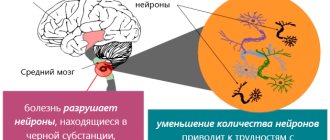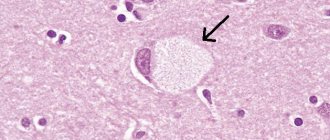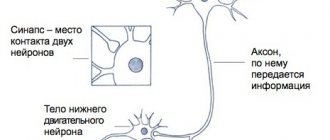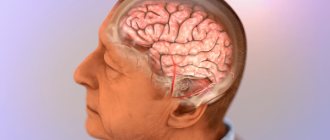Pick's disease is one of the types of senile dementia in which atrophic changes occur, most often in the frontal and temporal lobes of the brain. It occurs mainly in older people over 50 years of age. Clinical manifestations are similar to Alzheimer's disease, but are less common and more malignant. Women are diagnosed twice as often as men.
Disease history
Pick's disease has been little studied and is rarely diagnosed. From the moment of detection, 6–8 years pass until the end of life. The disease is based on atrophic processes in the brain, and this is not due to a hereditary predisposition, although doctors previously considered genetics to be the main factor in the development of the disease.
Czech doctor Albert Pick was the first to describe the symptoms of the disease in 1892, after which the pathology was named after him. It was he who suggested a hereditary connection - he discovered that relatives of people who suffer from dementia are also likely to develop it.
Arnold Pick did not consider pathology a separate disease, but assumed that it was only a variant of senile dementia. When the development of the disease was studied pathologically, distinctive morphological features were discovered, and it was identified as an independent nosology.
Description of the disease
According to the literature, Alzheimer's disease is four times more common than Pick's dementia. Due to the rarity and complexity of diagnosis (at least intravital), there is not much data on the disease. It is known for sure that men get sick less often, and the pathology is progressive.
Senile dementia is characterized by severe mental impairment and neurological pathologies. The brain is affected mainly in the frontotemporal area, resulting in impaired behavior and speech.
Pick's disease is often diagnosed against the background of mental disorders, but they are not considered the root cause of the disease, although they provoke its development. Not only the temporal and frontal lobes can undergo atrophy - sometimes it goes beyond and affects the subcortex. In this case, there is no inflammation, vascular disorders are either absent or mild.
The neurodegenerative disease progresses slowly at first, but in the initial stages entire groups of nerve cells die. Over 5-7 years, they can spread to the entire brain, although the focus is observed mainly in the temporal and frontal lobes. First, destructive processes affect the second and third convolutions, and a little later - the first. Less commonly, the parietal lobes may be affected.
The manifestation of Pick's disease begins in the anterior frontal regions of the brain, which immediately affects a person's behavior and personal characteristics. Later, the temporal lobes, which are responsible for intelligence, memory, and concentration, undergo changes. The cortex of the speech analyzer is also destroyed, which immediately affects speech abilities.
Unlike other neurodegenerative pathologies in psychiatry, Pick's disease is characterized by deep damage to the entire lobe of the brain, and not just part of it. First, the upper layers are affected, then the process spreads deeper.
Examination of brain tissue under a microscope showed that patients experience “swelling” of cells, the thickness of the gray matter decreases, the transition from gray to white matter is blurred, and the boundaries are unclear. Another characteristic feature is the separation of the cerebral vascular endothelium. This causes circulatory disorders, stagnation of cerebrospinal fluid and, as a result, enhances neurodegenerative processes and atrophy. Moreover, separation of the endothelium always occurs in Pick's disease, but in Alzheimer's disease - only in 25% of cases.
Peculiarities
Pick's disease has several typical symptoms:
- the disease appears at a relatively early age. If with Alzheimer's disease the average age of onset of dementia is 65 years, then with Pick's disease it is 55-56 years;
- the onset of the disease is gradual;
- specific onset of the disorder: the disease affects the frontal and temporal lobes of the brain. Because of this, personal changes appear first, while intellectual functions (memorization, recall, attention, orientation) are disrupted later. Because of this, the disease is often confused with age-related character changes;
- motor activity decreases slightly and persists until the last stages of the disease. Movements become monotonous. The course of Pick's disease does not affect coordination of movements, fine motor skills, the ability to walk, or control physical actions.
Symptoms of Pick's disease:
Passivity. Gradually, a person becomes less active, he does not show initiative, tries to avoid communication, and is reluctant to do any work. His circle of interests is narrowing. Apathy becomes almost constant. Against this background, patients stop taking care of themselves and neglect personal hygiene.
Lack of criticism. Already at the initial stages of the disease, the patient ceases to adequately evaluate his actions, behavior, and consequences of actions. This looks like a sharp deterioration in character: a person behaves dissolutely, vulgarly, indecently, he can make rude jokes, insult others, and be rude to them. His own desires come to the fore for him, and because of this he may drink too much alcohol, sweets, fatty foods, and exhibit inappropriate sexual activity.
Planning problems. It becomes difficult to take deliberate, purposeful actions. As dementia develops, the patient loses the ability to plan his activities and control them. Problems arise with analysis and logic, generalization, and formation of judgments. A person cannot set goals and achieve them. Even simple household chores become too difficult for him.
Speech disorders. With Pick's disease, the patient's speech is disrupted during the first two years of the disease: it becomes monosyllabic, simple, and devoid of emotion. It is difficult for him to maintain a conversation, conduct a dialogue, follow the conversation, formulate and express thoughts. He prefers to express himself as simply as possible or avoid communication. The less a person talks, participates in conversations, the more he limits his communication, the faster speech disorders progress.
The disease develops in three stages:
- First stage. Behavior changes, it becomes rude, selfish. Problems with planning appear, which may appear as disorganization or irresponsibility. Patients are often distant and apathetic. If a diagnosis is made by a psychiatrist, thinking disorders are detected. At the same time, the person retains motor activity, he has no ailments or specific symptoms;
- second stage. Self-control continues to decline, behavior becomes immoral, and a person ceases to control his sexual and eating behavior. The patient ceases to recognize the emotions of others and respond to them. Speech becomes simple, rude, monosyllabic. Echolalia appears - repetition of sent words, remarks, sounds. Thinking becomes simpler, problems with planning and regulation of activities become more pronounced;
- third stage: apathetic behavior, complete lack of activity, the person tries not to do anything at all. Speech is monosyllabic, vocabulary is minimal, disorders progress to the point of mutism (the patient stops responding to questions and requests). At this stage, disturbances in memory, orientation in time and space appear, and motor disorders are formed (symptoms are similar to Parkinson's disease). The ability to self-care is lost.
Causes of the disease
The etiology of Pick's disease is still unclear. Although there are “familial” episodes of the disease, more often it is not transmitted from parents to children, but is diagnosed in siblings. However, the hereditary factor has been completely refuted.
Etiological factors are considered:
- negative effects on humans, in particular on the brain, of chemicals;
- incorrect dosage and/or frequent use of anesthesia;
- mental disorders.
Not the main, but provoking factor can be considered a lack of B vitamins, traumatic brain injuries, and intoxication. Some experts believe that a provoking factor may also be a failure in the metabolism of tau protein, a component that is an element of the cell membranes of neurons.
In this disease, brain cells undergo atrophy and destruction - they lose functionality, decrease in size or are completely destroyed. Regardless of the combination of symptoms, it is always accompanied by dementia due to a violation of the higher function of the cerebral cortex. In this case, dementia is acquired.
The risk group includes patients over 50–55 years of age, females, and in whose family there are cases of this type of dementia. Traumatic brain injuries do not serve as a provoking factor for infection, but significantly accelerate and aggravate the course of the disease.
The disease can be diagnosed in younger people as early as 40–45 years of age. But at this age it progresses slowly, the symptoms are mild, so patients rarely see a doctor, and at the time of diagnosis, the second stage is already detected. The onset most often is not so pronounced and can manifest itself in increased anxiety, loss of control over one’s actions, and depressive states, which the patients themselves usually justify as stress or other similar reasons.
Prognosis and prevention
From the moment of the onset of the disease in an adult patient, the period of development of the disease to a thermal state and death lasts from 2 to 10 years. The speed of development has not been precisely determined by doctors. Improvements in the condition are observed in patients receiving constant supportive medication, physiotherapeutic and psychological care.
There are currently no specific measures to prevent the occurrence of complex brain pathology leading to profound dementia and death. Maintaining a healthy lifestyle becomes an important condition for maintaining health. The development of any form of dementia is additionally provoked by the use of alcohol and psychotropic drugs. People whose family has been diagnosed with senile dementia, specifically Pick's disease, are recommended to undergo preventive examinations. To identify disorders in the cerebral cortex, CT and MRI are recommended. These early studies will allow us to determine the risk of disease onset and develop the appropriate type of effective therapy.
When a case of illness is identified, it is recommended to consider the procedure for future care of a sick relative. In this situation, it is not advisable to spend money on inviting doctors who are ready to recommend experimental courses and techniques. Pick's disease today continues to be included in the list of incurable diagnoses. For the purpose of prevention in the early stages, the patient or his relatives can take care of creating comfortable conditions for the patient, which will be required at the moment when he has already lost the ability to move independently. First of all, this relates to preliminary consideration of types of care.
Difference between Pick's disease and Alzheimer's disease
Alzheimer's and Pick's diseases are similar, but they are two separate forms of pathology with their own clinical manifestations. Common to the disease is dementia. But when diagnosing Pick's disease:
- memory is partially preserved;
- concentration remains;
- changes in personality characteristics are more pronounced - absence of emotions and a decrease in the frequency of their manifestation, apathy, indifference;
- if the basal cortex of the brain is damaged, the concepts of morality and morality disappear - a person loses his sense of tact and does not comply with generally accepted norms of behavior;
- if the brain is simultaneously affected in the area of the forehead and temples, speech changes, it becomes illegible, clumsiness appears in movements.
Unlike Alzheimer's disease, Pick's disease has difficulty navigating a new environment. He may go very close to home, but is unable to find his way back. In addition, disorientation in time is characteristic - it is difficult to determine what time of day it is.
In general, Alzheimer's disease is milder and its symptoms are not as pronounced. This affects the patient’s quality of life and its duration. Patients, as a rule, live shorter lives, their condition is more severe, and due to the progression of the disease they quickly lose their human appearance.
Causes and risk factors for Pick's disease
Modern research shows that patients aged 50-60 years and older are susceptible to this type of senile dementia. Recently, the disease has been actively studied. But all the research so far does not allow us to accurately determine the reasons for the onset of age-related changes in the temporal and frontal lobes. Some common factors found in patients affected by pathology have been identified:
- Hereditary factor. In most cases, close relatives of the patient suffered from Pick's disease.
- The onset of degenerative processes is caused by a serious head injury, which causes the death of neurons, which leads to irreversible changes in the cerebral cortex.
- Neuronal damage caused by exposure to chemicals caused by exposure to heavy metals, their excessive concentration. The list of factors includes the constant impact of alcohol on the human body.
- Pick's disease is often a consequence of mental disorders. The risk group includes all patients under the supervision of a psychiatrist.
- A risk factor is the constant use of psychotropic drugs.
- A hypovitamin condition can lead to the onset of the disease.
A feature of the disease is the absence of a guaranteed start of Pick's disease, even with a combination of all these factors. Often, the death of neurons is caused by factors that doctors are currently unable to clearly identify.
Important: Treatment for Pick's disease is ineffective. Modern methods are not able to stop degenerative processes, which lead to complete dementia 5-6 years after the first episode.
The atrophic process continues continuously. It affects subcortical structures and cortex. Inflammation and vascular disorders are not detected.
During diagnosis, specialized studies are carried out to separate Pick's disease from other diseases with similar symptoms. Primarily for Alzheimer's disease. Senile dementia is also characterized by similar symptoms. Many symptoms are also present with intracerebral tumors.
Diagnosis in most cases is performed already at the second stage of a complex disease. In many cases, the appeal comes from the patient’s relatives who complain about his antisocial behavior.
In order to accurately determine the lesion, a personal examination of the patient by a specialist is carried out. In its course, the development of Pick's disease allows us to assume:
- aggressive behavior;
- failure of the patient to comply with hygiene skills;
- a penchant for crude humor appears;
- hypersexuality is noted.
Special tests are prescribed to identify concomitant diagnoses. An accurate diagnosis is established by analyzing the growing symptoms. Additionally, studies of the cerebral cortex are carried out using MRI or CT. Magnetic resonance therapy is preferable in this case. During this procedure, the brain is imaged layer by layer, helping to identify areas of damage. Such a thorough examination at the earliest stages allows specialists to determine the type of Pick's disease that the patient suffers from and to identify the exact location of the lesions.
Another study that helps determine the onset of the disease is performing an EEG (encephalography). The study determines the degree of brain activity. In many cases, EEG data is checked and confirmed by CT or MRI. Using all of the above research options provides the most complete picture.
It is important to note that if it is possible to conduct only one of the types of proposed studies, preference is given to MRI. It gives the most complete picture of the condition of the internal organs.
Conducting research ensures that errors in diagnosis are eliminated, allowing Pick's disease to be separated from other degenerative brain lesions at a very early stage. Primarily for Alzheimer's disease.
Often the classic form is also confused with Pick's disease, which is diagnosed in children. Despite the similarity of names, these are different diagnoses. They require different treatment methods.
The main difference is the age of the patients. Diagnosis is carried out with special care at the onset of pathology in patients in the age group of 30 to 40 years. Age-related changes begin in most situations after 50. But additional factors are taken into account. For example, lifestyle and type of work performed. Early senile changes may be associated with the death of neurons, which is provoked by frequent damage to the cerebral cortex by active chemicals, mechanical stress, alcohol and other factors. The specialist receives all this data during a personal conversation during a preliminary examination with the patient himself or his relatives. Pick's disease at an early age negatively affects the quality of life and requires complex therapy.
Stages of the disease
Pick's disease is divided into three stages. From detection to the end of the third stage, a maximum of 10 years passes, more often 6-7. Types of pathology:
- First stage. Characterized by disinhibition and actions that have no motive. For example, the patient may have neutralized basic instincts and lack control over his actions and emotions. Another characteristic feature of the onset of the disease is selfishness. In addition, libido sometimes increases and sexual disinhibition occurs. There are also changes in speech - repeated repetition of the same words, sentences or stories occurs. The emotional sphere at this stage is relatively stable - most often there is euphoria, which manifests itself in high spirits, but it can suddenly give way to complete apathy. There is no memory impairment yet, but at this stage the person cannot explain his strange behavior or justifies it with impatience.
- Second stage. All the symptoms described above get worse. Focal signs of dementia appear, speech becomes even less intelligible, it is difficult for the patient to understand and assimilate information, he may forget events that happened a long time ago or very recently. It may be difficult for him to count and perform targeted movements - fine motor skills are impaired. At this stage, the disease is almost identical to Alzheimer's disease, but there are no epileptic seizures. Another characteristic feature is imitating the movements/facial expressions of other people and automatically repeating new words. The pain threshold also increases (cutaneous hyperalgesia).
- Third stage. It is considered final. It is characterized by complete insanity, decreased muscle tone and, ultimately, a vegetative state of the patient. He cannot move, solve everyday issues, for example, eat, relieve natural needs, or dress. At this stage, incurable disability is diagnosed, which ends in death.
Stage 3 dementia is irreversible. At this time, the patient needs constant care - he himself is not able to perform even the simplest tasks, since his capacity, both mental and physical, is lost.
Stages of disease development
Pick's disease is a progressive dementia that goes through 3 stages in its development.
initial stage
Personality changes are expressed in the loss of habitual moral principles. The person becomes extremely selfish and behaves antisocially. Loss of control over one's actions leads to the immediate realization of any instincts and physiological needs in any situation, in any environment. The person explains the abnormal behavior by saying that everything happened by chance, he simply “couldn’t resist”...
During this period, a person experiences sudden changes in mood from complete apathy to bouts of euphoria. Often there is the so-called “gramophone record” syndrome with repeated repetition of the same phrase.
Second stage
Cognitive impairment increases. A person loses his memory, ceases to understand the speech of others and cannot clearly formulate his thoughts, loses reading, writing and counting skills, and loses the ability to consistently perform the simplest actions.
At first, all these disturbances appear sporadically, but as the disease develops, they become permanent and intensify to the point of complete intellectual degradation of the individual.
Third stage
Occurs 5-6 years after the first signs of the disease. Peak's disease takes the form of profound dementia. The person is completely immobilized, disoriented and incapable of basic self-care.
In the absence of constant care and palliative care, the death of a person from cerebral insufficiency, congestive pneumonia, pyelonephritis, etc. is inevitable...
Symptoms
The severity of symptoms, as well as their range, depend on the stage of Pick’s disease. Main signs of the disease:
- Loss of moral principles. The patient may relieve his natural needs in inappropriate places, not control his behavior and statements, selfish character traits become aggravated, and overall behavior becomes asocial.
- Immediate realization of instincts. This also applies to sexual desire - with increased libido, frequent casual sexual contacts are possible, including with strangers. The possibility of waiting also disappears - all the physiological needs of the patient must be fulfilled as quickly as possible. For example, bulimia may develop - uncontrolled eating of large amounts of food even after satiety.
- Change in speech. It becomes indistinct, multiple repetitions of jokes, words, and individual phrases can be traced. This is called the "gramophone record" sign.
- Mood swings. It can range from euphoria to complete apathy, and only a few minutes can pass in between.
- Dementia. Its severity depends on how atrophic processes develop in the brain. But in general, emotional instability, periods of disinhibition and rigidity, loss of desires, goals, and complete lack of will can be traced. It is possible to develop depression, and sometimes a combination of inappropriate behavior with euphoria.
The more Pick's disease progresses, the more severe the symptoms become:
- misunderstanding the speech of others;
- loss of basic numeracy, writing and reading skills;
- inadequate perception of what is happening around;
- memory losses;
- inability to perform actions consistently and logically;
- at the end, deep dementia, disorientation, and loss of self-care skills develop.
If at first such violations are episodic in nature, then by the end of the second and third stages they become permanent, progressing until the complete destruction of the intellect.
The death of patients with Pick's disease is most often due to a combination of a number of factors:
- cerebral insufficiency;
- infection of bedsores followed by sepsis;
- congestive pneumonia due to constant exposure to a horizontal position;
- ascending pyelonephritis, etc.
Changes affect the physical and mental spheres of a person. Some develop obesity or, on the contrary, exhaustion, intelligence suffers greatly - vocabulary gradually decreases, a person loses previously acquired knowledge, even if before the disease he was a specialist in his field with an above-average level of intelligence.
How does dementia manifest in Pick's disease?
Changes in the structure of the brain that are negative, progressive and irreversible are dementia. It leads to loss of memory, intelligence, ability to learn and spatial orientation, and loss of existing skills.
The listed signs develop over about six months, while the person’s consciousness initially remains completely clear. In rare cases, a more dramatic change in personality and character occurs.
Unfavorable life factors provoke the occurrence of dementia:
- Traumatic brain injury, bruise.
- Long-term use of the drug without medical supervision.
- Metabolic disorders in the body due to diseases of the internal organs, which are progressive in nature.
- Chronic lack of vitamin B in the body.
- Tumors.
- Infections.
- Alcoholism.
Diagnostics
Diagnosis usually begins with interviewing family and friends, collecting anamnesis and examining the patient. Diagnostic measures are divided into several stages:
- Differentiation of the disease from other pathologies, for example, Alzheimer's disease. It is also necessary to exclude oncology, vascular disorders, schizophrenic syndrome, and tumor processes in the frontal zone of the brain.
- Additional consultations with narrow specialists. For example, consultations with a neurologist or psychiatrist may be required.
- EEG. A decrease in the bioelectrical signature emanating from the frontal areas of the brain is recorded.
- REG, ultrasound. This diagnosis allows you to exclude or confirm vascular changes.
- EchoEG. Allows you to detect the presence of fluid in the brain.
- MRI. Necessary for clear visualization of atrophic changes in brain tissue.
Laboratory tests, as a rule, are not required for the patient. They have no diagnostic value. It is extremely rare that a biochemical blood test may be prescribed.
Possible complications and consequences
Pick's disease is an incurable disease. With the best care and the right type of therapy, it will not be possible to stop its development. You can only correct the patient’s well-being.
In the early stages, patients primarily experience moral complications. The problem becomes the inevitability of awareness of the onset of a vegetative state. Against this background, a significant proportion of patients experience depression.
As Pick's disease progresses, patients lose contact with the outside world. The state of health gradually deteriorates due to the appearance of stagnation in muscle tissue. To eliminate unpleasant manifestations, massages are recommended. Blood flow to the skin reduces the risk of bedsores. Without proper care, patients with Pick's disease rapidly develop congestive pneumonia and ascending pyelonephritis.
To eliminate the risk of further deterioration in health, patients require constant medical supervision. Prescription of additional medications to relieve manifestations of concomitant diseases.
The list of complications of this serious disease:
- the patient’s transition to the stage of deep insanity, excluding the manifestation of cognitive functions;
- complete immobility sets in, caused by the patient's inability to understand that he simply must do something.
An incurable disease leads to death in a short time. The task of relatives and friends is to alleviate the condition of an incurable patient.
Treatment
Unfortunately, there is currently no effective therapy for Pick's disease. The main task of the doctor after diagnosing this disease is to support the patient’s body and slow down the destructive processes in the brain. Accordingly, treatment is selected based on the stage of the pathology and the presence of certain symptoms. It can be:
- antidepressants;
- MFO inhibitors;
- neuroprotectors to stimulate metabolic processes in the brain and increase cell activity, which helps slow down atrophic processes;
- sometimes anti-inflammatory therapy is needed;
- sedatives stabilize the psycho-emotional background and reduce aggressiveness.
One of the stages of helping a patient is constant care in the final stages. When a patient loses self-care skills, not only is he unable to perform most common household tasks, but he may also cause harm to himself or others. The solution to this problem is professional nursing care if relatives cannot be with the patient around the clock.
There is also no specific prevention for Pick's disease. General recommendations relate to maintaining a healthy lifestyle, promptly consulting a doctor if you suspect brain pathologies, and taking activities that improve cognitive function. People who have relatives with a similar disease or other types of dementia should be especially careful.
The prognosis for Pick's disease is poor. The duration of the disease until the patient’s death is influenced by age, general health, and the adequacy of the prescribed therapy.
Treatment of Pick's disease
There is currently no specific therapy for Pick's disease. Its development is being carried out by leading medical centers, but has not yet led to guaranteed success. In order to alleviate the health condition of patients, supportive therapy is used.
The basis of the course are:
- galantamine, donepezil, choline alfoscerate and other anticholinesterase pharmaceuticals;
- in case of aggressive behavior of the patient, antipsychotics are prescribed
- nootropics, such as piracetam, gamma-aminobutyric acids, memantine.
Psychotherapy can play a major role in the early stages of the disease. Classes with a psychologist allow the patient to accept the fact of the onset of an incurable pathology. Understanding the problem can help a patient with initial brain damage to control his behavior.
Sessions with a psychologist are also recommended for the patient’s relatives. They allow you to adjust your behavior towards a sick close relative. At the third stage, constant supervision by a specialist is recommended. This allows timely changes to be made to the course of maintenance therapy. The use of effective techniques even during the transition to a vegetative state makes the patient’s situation easier.
In the early stages of the disease, physiotherapy and walking are recommended. Such measures help maintain the patient’s motor activity and reduce the rate of muscle atrophy. Presence training, sensory room, and art therapy are used.










